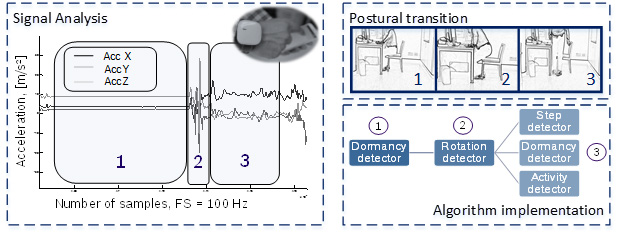
The focus of this paper was on finding wrist sensor-derived features for detecting highly acute fall risk from the sit-to-stand transitions performed in a non-ambulatory environment. Furthermore, the influence of the dominant and non-dominant hand on these features was investigated. A cohort of 174 older subjects was monitored for seven consecutive days in their home setting by using inertial sensors attached at the wrist. Based on the reported falls during a one-month follow-up phase, two groups were defined. Twenty-one time and frequency domain features were implemented for the quantitative assessment of extracted sit-to-stand transitions. The statistical analysis yielded two features that could convincingly distinguish fallers from non-fallers for the dominant hand, and six for the non-dominant hand. A novel feature, energy of the applied support during standing up, showed statistically good performance independently of on which hand the sensor node was worn, as well as for the dominant and non-dominant hand (p<0.014, p<0.027, and p<0.020, respectively). This paper overcomes limitations of clinical tests and shows a reliable application of wrist-worn bands in terms of assessment of highly acute fall risk. In addition, it reveals the sit-to-stand transition as a potential assessment source for the wrist-worn devices in the elderly population. Early assessment of the risk of falling in a widely accepted and non-stigmatized manner has the ability to bring crucial changes in fall prevention strategies, reducing the number of falls and the fall rate.

